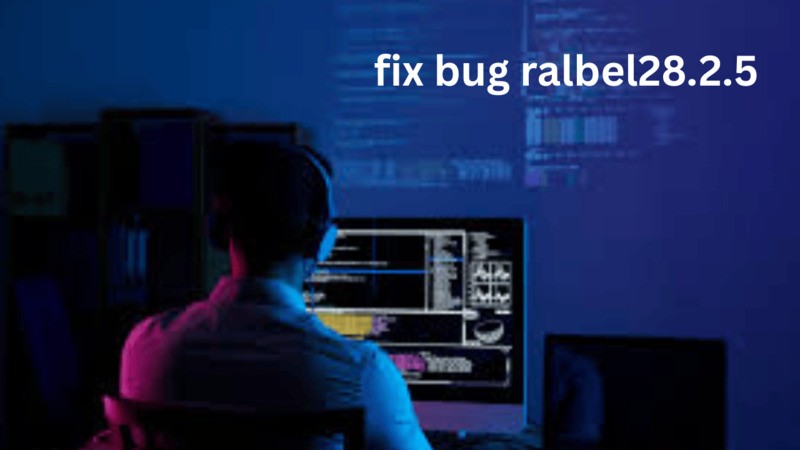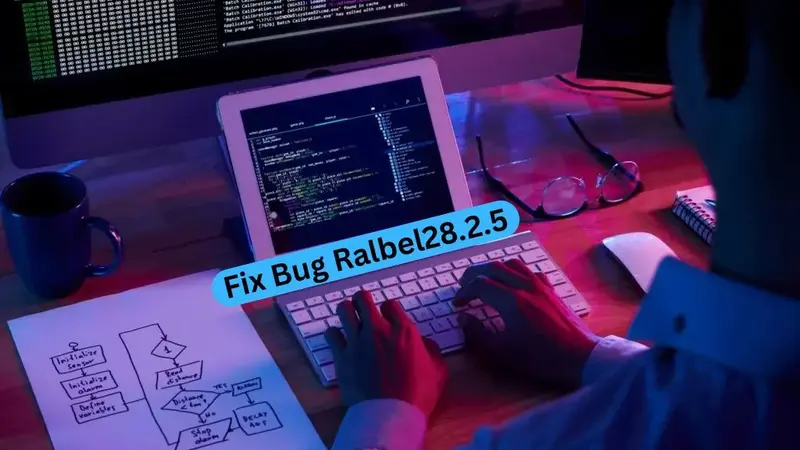Ralbel28.2.5 refers to a specific software version or build that has been reported to contain a recurring bug affecting stability, performance, or compatibility across certain platforms. While not every user will encounter the issue, those who do often experience disruptions in workflow, application crashes, or data inconsistencies.
In technical environments, especially those dependent on software reliability, even a single bug can cascade into larger problems. Ralbel28.2.5 is one such case where the bug may impact both end-users and developers. It can affect applications running on desktops, servers, or integrated environments, depending on how the version is deployed.
1. Why Fixing This Bug is Important
Fixing the Ralbel28.2.5 bug is critical for several reasons:
- System Stability: Left unresolved, the bug can cause application crashes, system slowdowns, or unexpected errors.
- Data Integrity: Some users report that the bug can interfere with saved files or logs, creating a risk of corrupted data.
- Productivity: For organizations relying on the affected version, productivity may decline due to repeated interruptions.
- Security Risks: Bugs can sometimes expose vulnerabilities that hackers may exploit.
In short, addressing Ralbel28.2.5 ensures smooth operations, user satisfaction, and long-term system security.
2. Understanding the Bug
Common Symptoms of Bug Ralbel28.2.5
Users experiencing the bug often report the following symptoms:
- Application freezing or hanging during heavy tasks.
- Unexpected error messages referencing “Ralbel28.2.5” or related components.
- Delays in processing or reduced software responsiveness.
- Conflicts when integrating with third-party plugins or APIs.
- Occasional system restarts triggered by software crashes.
These symptoms may vary depending on the platform and system configuration, but generally point toward the same underlying issue.
Root Causes of the Issue
Through technical analysis and community reports, some potential root causes include:
- Coding Errors: Small oversights in the Ralbel28.2.5 update may have introduced unexpected behavior.
- Compatibility Problems: The bug could result from incompatibility with specific operating systems, drivers, or hardware.
- Memory Management Issues: Poor handling of system memory could cause crashes or lags.
- Improper Patch Integration: The bug may have surfaced due to conflicts with previously installed patches or updates.
Affected Platforms or Versions
While the bug is tied to version 28.2.5, not all environments are equally affected. Reports suggest that:
- Windows 10/11 users notice frequent freezes.
- Linux distributions encounter dependency conflicts.
- MacOS users face slower performance but fewer crashes.
-
Systems running older versions of Ralbel (before 28.0) are unaffected, while later versions (28.3 and above) reportedly resolve many of the issues.
3. Preparing to Fix the Bug
System Requirements
Before applying fixes, ensure your system meets basic requirements:
- Stable internet connection (for downloads/patches).
- Adequate free disk space for temporary files.
- Latest OS updates installed.
- Administrative permissions to install or uninstall components.
Tools and Software Needed
Depending on your platform, you may need:
- Bug Patch Installer provided by the official Ralbel development team.
- System Monitoring Tools like Task Manager (Windows), Activity Monitor (Mac), or htop (Linux).
- Log Readers to analyze crash reports and error logs.
- Version Rollback Utility in case you need to revert to an earlier stable release.
Backup and Safety Precautions
Before attempting to fix the bug, always:
- Back up important files to external storage or the cloud.
- Create a restore point (Windows) or system snapshot (Linux/Mac).
- Export software configurations to avoid redoing settings after the fix.
These precautions ensure that you can recover quickly if the patch fails or causes further complications.
4. Step-by-Step Guide to Fix Ralbel28.2.5

Identifying the Error
- Check system logs for error codes mentioning Ralbel28.2.5.
- Run diagnostic tools to confirm whether the issue stems from this bug.
- Cross-check with community forums or official documentation to verify symptoms.
Applying the Fix or Patch
The developers of Ralbel typically release hotfixes or cumulative patches. To apply them:
- Download the official patch from the Ralbel support website.
- Run the installer and follow on-screen prompts.
- Restart the system after installation to apply changes.
- Verify that the software version has been updated (e.g., 28.2.6 or higher).
Manual Troubleshooting Methods
If an official fix isn’t available or fails to work:
- Reinstall Ralbel: Uninstall version 28.2.5 and reinstall the latest stable version.
- Rollback to Previous Version: Downgrade to version 28.2.4 or earlier until a stable update is available.
- Adjust System Settings: Disable conflicting plugins, adjust memory allocation, or tweak compatibility settings.
- Clear Cache and Temp Files: Sometimes, corrupted temporary files trigger persistent errors.
Testing After the Fix
Once applied, test your system by:
- Running previously problematic tasks.
- Monitor system stability for at least 24 hours.
- Checking error logs to confirm no new issues arise.
- Seeking feedback from multiple users when working in a team environment.
5. Alternative Solutions
Temporary Workarounds
Until a permanent fix is applied, consider:
- Running the software in safe mode or compatibility mode.
- Disabling non-essential features that trigger the bug.
- Using a virtual environment to isolate the problem.
Using Third-Party Tools
Some third-party system utilities may help bypass issues:
- Registry Cleaners (Windows) to fix corrupted entries.
- Dependency Managers (Linux) to resolve package conflicts.
- Performance Optimizers to reduce memory leaks.
Contacting Support
If troubleshooting doesn’t work:
- Submit a support ticket with detailed logs.
- Check the Ralbel knowledge base for official guidance.
- Join community forums where users share their own fixes.
6. Best Practices to Prevent Future Bugs
Regular Updates and Patches
Always keep your software and operating system updated. Developers frequently release patches not only for bugs but also for security vulnerabilities.
Monitoring System Performance
Use system monitoring tools to catch performance dips early. Regularly check CPU, RAM, and storage usage to detect unusual spikes.
Following Secure Development Practices
For developers using Ralbel as part of their workflow:
- Test new updates in a staging environment before rolling out to production.
- Use version control systems to revert easily if bugs arise.
- Document all changes for easier debugging in future releases.
7. FAQs About Ralbel28.2.5
Is this bug critical or minor?
The severity depends on usage. For casual users, it may cause only minor slowdowns. For enterprises or developers, it can be critical, leading to workflow disruptions.
Can it cause data loss?
In rare cases, yes. Some users have reported corrupted logs or unsaved work. Always back up important data before troubleshooting.
What if the fix doesn’t work?
If official patches and manual methods fail, the best solution is to roll back to a stable version until developers release a permanent fix. Reporting the bug also helps ensure faster resolution.
8. Conclusion
Summary of Fixes
Bug Ralbel28.2.5 causes system instability, crashes, and compatibility problems. Fixes include applying official patches, reinstalling or rolling back versions, and using manual troubleshooting methods.
Importance of Staying Updated
Software evolves quickly, and updates are vital for security and stability. Ignoring updates often results in recurring bugs or vulnerabilities.
Final Recommendations
- Apply the official patch whenever available.
- Always back up data before troubleshooting.
- Engage with community forums and support channels to stay informed.
- Consider upgrading to newer Ralbel versions for long-term stability.
By following these guidelines, users can effectively fix Bug Ralbel28.2.5, prevent future issues, and maintain a smooth, secure computing experience.

